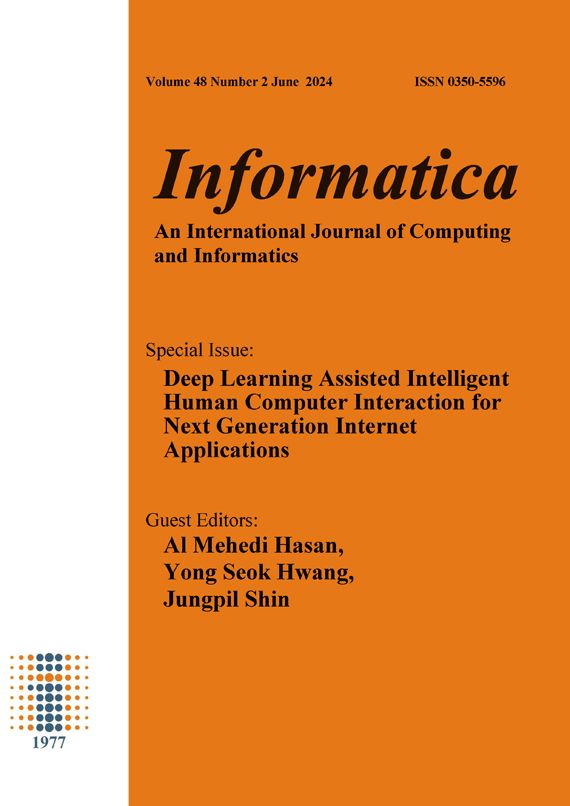Parkinson Net: Convolutional Neural Network Model for Parkinson Disease Detection from Image and Voice Data
DOI:
https://doi.org/10.31449/inf.v48i2.5077Abstract
Parkinson's disease (PD) is a critical dopaminergic neuron problem that causes brain disorders. The early prediction of PD can save human lives. So, computer-aided detection (CAD) with artificial intelligence (AI) models can predict the PD in quick time as compared to manual prediction. Traditional machine learning (ML) methods, on the other hand, were identified PD using either voice or image datasets. However, they resulted in poor PD detection performance, which caused misclassification. So, this work focused on the implementation of a deep learning (DL) mechanism for PD identification from both voice and image datasets, which is named ParkinsonNet. Initially, a combined dataset is considered, which contains the voice and image samples. Then, a data processing operation is performed to normalise the images to a uniform size, which also performs the data balancing operation in the voice dataset. Then, a voice-image ensemble-based convolutional neural network (VIE-CNN) model is trained with the pre-processed voice-image data. Here, categorical cross entropy (CCE) is used to optimise the losses generated during the training. Then, the VIE-CNN model predicts the normal and abnormal classes from the test data. The simulation results show that the proposed ParkinsonNet achieved 99.67% accuracy on image data and 98.21% accuracy on voice data. The simulation results show that the proposed ParkinsonNet resulted in improved accuracy over conventional methods.Downloads
Published
Issue
Section
License
I assign to Informatica, An International Journal of Computing and Informatics ("Journal") the copyright in the manuscript identified above and any additional material (figures, tables, illustrations, software or other information intended for publication) submitted as part of or as a supplement to the manuscript ("Paper") in all forms and media throughout the world, in all languages, for the full term of copyright, effective when and if the article is accepted for publication. This transfer includes the right to reproduce and/or to distribute the Paper to other journals or digital libraries in electronic and online forms and systems.
I understand that I retain the rights to use the pre-prints, off-prints, accepted manuscript and published journal Paper for personal use, scholarly purposes and internal institutional use.
In certain cases, I can ask for retaining the publishing rights of the Paper. The Journal can permit or deny the request for publishing rights, to which I fully agree.
I declare that the submitted Paper is original, has been written by the stated authors and has not been published elsewhere nor is currently being considered for publication by any other journal and will not be submitted for such review while under review by this Journal. The Paper contains no material that violates proprietary rights of any other person or entity. I have obtained written permission from copyright owners for any excerpts from copyrighted works that are included and have credited the sources in my article. I have informed the co-author(s) of the terms of this publishing agreement.
Copyright © Slovenian Society Informatika








